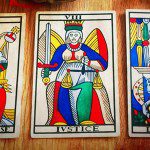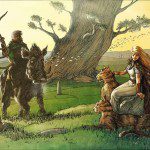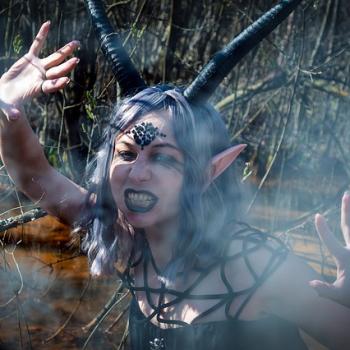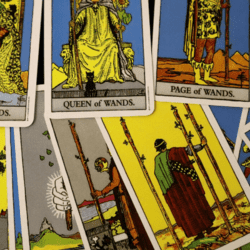One of the things that often attracts people to Heathenry and related practices is our Gods. While the Ancestors and vaettir (land spirits) often hold important places in our hearths and hearts, the Gods draw our attention and admiration. How can they not? They are powerful and complex beings, many with great stories attached to them in our lore. They capture our imagination and won’t let go, even manifesting in modern art (though it’s a more recent phenomenon, DeviantArt is a wonderful place to search for many different modern artists’ renditions of figures from Northern mythology, even relatively obscure ones).
So as a regular feature of this blog, I’m going to provide what I’m going to call Divine Profiles, an overview and description of a deity to provide you with a window to their identity. I will warn: these will hardly be complete; there are whole books written about individual Gods within our pantheon. However, I’ll try and draw pertinent lore (information about them from the Eddas and other older sources), shared gnosis and experience, and in some cases personal gnosis. Worry not; I’m committed to making the difference between the two clear.
One thing that I do not intend to do is the Dungeons and Dragons’ style “statistics sheet” that people often create when writing about Gods. I do not trust the concept and construction of “God of”; the Aesir and Vanir (the primary tribes of deities in Norse mythology) are beings in their own right, and attributes like that, while they make a useful shorthand, are unhelpful in getting to know them as the complex figures that they are. What is a God the God “of”? Heathens are fond of the saying, “We are our deeds.”, so perhaps it’s best to know a God by what they do and have done, and then by how others describe them.
Freyja
There are not enough words to describe her. The name that we know her by means, “Lady”, a title and position of power. Her name is worked into the name of my column; the Lady’s Quill refers to the fact that I write devotional material for her (thus trying my best to act as her quill), but it was also a sly reference to her connection to both falcons and boars, both of whom bear quills.
Lore
Freyja is known as the sister of Freyr and the daughter of Njord. According to Snorri, Freyja is “fair of face and mighty” and “the most renowned Goddess.” She rides in a great chariot drawn by cats, and her name comes easily to those who pray to the Gods. She is pleased by songs of love and often called upon in matters of love.
She is also a Goddess involved with death and the battle-slain. One of her bynames is Valfreyja, Lady of the Slain, as she collects half of those who die in battle herself (possibly getting first choice, depending on interpretation). There is a suggestion in Egil’s Saga that women who are devoted to her join her in her hall after death, as well.
She is of the Vanir, one of the families of Gods acknowledged in Norse myth, often described as “Gods of Nature” (though there are multiple reasons I do not strictly agree with this attribution). In the early days of the Gods’ history the Vanir and the Aesir (the more prominent tribe of Gods in Norse mythology, among whom are some of the better known figures such as Odhinn and Thor, Frigga and Sif) were at war with one another. As part of the settlement between the two tribes, Njord and Freyr were called to live among the Aesir in Asgard. Freyja came as well, but she was not traded. Why she chose to live among the Aesir is unclear, but it is reflective of a theme with Freyja: she makes her own decisions about herself. She is a being that lives by her own power and authority, and refuses to subject herself to another’s will but by her own choosing.
Freyja is a sexual Goddess. She is referred to again and again in the tales as being lusty. Demanding Freyja’s hand in marriage is something that enemies of the Gods do multiple times, her beauty and power are obviously widely desired. Indeed, when Loki is performing his equivalent of a celebrity roast on the Gods, he calls her our for having slept with every man in the hall. To his credit, Njord’s response could be paraphrased as, “So what?”
One place that her sexuality is prominent is in the legend of Brisingamen, her sacred necklace. Though there are different versions of the story, the overall narrative is generally the same. A marvelous necklace is made by four dwarven brothers who offer it to her in exchange for spending a night with them. When she returns, proudly bearing Brisingamen, her husband Odr has gone and she wanders the world, weeping tears of loss that turn to amber or gold when they strike the ground.
She is also known to have to daughters, Hnossa and Gersemi. Their names both mean something similar to “treasure” but little else is known about them (other than that Hnossa is the daughter of Odr).

Freyja is also a powerful sorceress. In the Lay of Hyndla, a devoted follower of hers, Ottar, begs her for aid in winning a contest where the participants are to recite their lineages and prove their worth by their ancestry. Because of all of the offerings and devotion he has given her over the years she cannot refuse it, so she disguises him as her boar Hildsvini and rides him in his dreams and rides him to the lair of the giantess Hyndla to try and convince her to teach him his lineage. Hyndla relents after hurling harsh insults at her and her mount, recounting an extensive lineage and foretelling part of Ragnarok in the middle of it. Freyja asks her for a potion to aid him in remembering all he has learned, which she provides but then reveals that it is cursed and poisonous. Freyja’s blessing shatters the giant’s curse and she throws a ring of fire around Hyndla to protect her and her charge from the giantess before departing.
Her sorcery takes multiple forms, as she herself does; she bears a feathered cloak that can transform her into a falcon, granting her the power of flight. She practices a form of magick known as seidh, which is (in my opinion) a catch-all term used in Norse mythology for withcraft (the sort of powers described as being available to seidh-workers tends to follow standard European folk witchcraft: divination, necromancy, cursing, stealing and bestowing luck, communication with and command of spirits, shapeshifting, etc.) According to the Ynglingsaga, it was she who taught seidh to Odhinn, and he shared the wisdom of the runes with her in exchange. Nowadays Freyja is often called upon for guidance and assistance by those who refer to their practice as seidh.
So from the Lore, we have a picture of a powerful sovereign Goddess, whose name is a title of authority, a woman of agency and might, sexuality and abundance, one who wields powerful magic and who the other Gods are afraid to cross. It’s no wonder that she’s one of the most popular of the Norse deities; both by word of Snorri in the past and evidenced by her popularity among modern Pagans, Heathen and otherwise.
Heiti or Bynames
Some Norse deities have a list of heiti, or by-names, that they go by. Some look to them for a greater understanding of the deity; they are certainly reflective of different aspects of their power and personality.
Freyja has more heiti in the lore than any other Goddess (as far as I’ve been able to discern). She is known as Mardoll (which might be translated as “Sea-bright” or “Sea-shine”). She is called Syr, or “Sow”. Nowadays that might not be considered complimentary but in the cultures in which she was venerated the boar was considered a symbol of robust fertility and abundance as well as being associated with the cults of the Vanir. She is called Valfreyja, Lady of the Slain, as one who chooses half of the war dead herself. She is known as Vanadis, the Dis of the Vanir (Disir are feminine protective spirits, who may or may not be Ancestors, who protect and bless family lines). She is called Blotgythia, the Priestess of the Sacrifice.
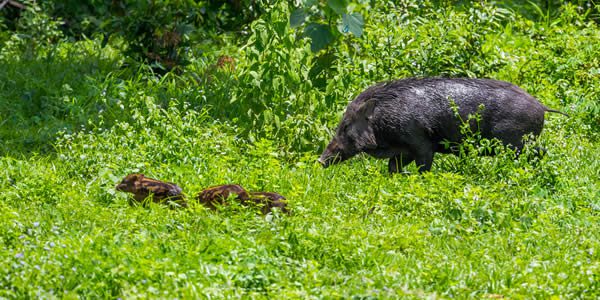
I have personal heiti I’ve given her, based on my own experiences with her. I call her Red-Gold, because that is the color that comes to mind in her presence. I name her Wand-Wise, as the wand was an important tool of magic in the North (the name could reference other ways that she is wise about wands, too, though I admit I had to have that pointed out to me). I call her the Mother of Twin Treasures or Mother of Treasures Twain, because her children are so rarely mentioned and few parents are not proud of their offspring or their role in raising them. I’ve also referred to her as Our Lady of the Runny Mascara, because eyes rarely remain dry in her presence.
Gnosis
I’ve given a description of a Goddess from her mythology. Let me tell you know why I love her so, and what she means to me.
Freyja is the being who I admire most of all. She is many of the things that I’d like to be – powerful, beautiful, wealthy, wise, magical, sovereign over her own destiny. She does what she wants when she wants to, but it is not by simple impulse but a combination of her passion and foresight (a trait that the Vanir are famous for) that guide her actions.
Freyja brings blessings of self-love and strength; many of her followers have observed this. She challenges us to be better than we are, pushing at our boundaries and forcing us to confront the things that we lie to ourselves about. That is one experience that seems consistent for most of her devotees that I’ve spoken to: she dislikes self-deception and challenges it.
She has many kinds of love, but none of it is saccharine. Whether it is sweet, sensual, fierce, or even violent, her love is a thing that is felt so strongly that it moves you.
Given that the Vanir are considered by many to be tied to the cycles of Nature I’d often wondered before how that was applicable to her. I came to realize that she is Passion. Passion is what gives us need and desire, what pushes us to connect to the world around us and interact with it. Passion drives us to appreciate the beauty of the world and reach out with our hands and change it where we will. Passion connects us through our senses to the world around us.
There have been many good things said lately about re-enchantment of the world – I think that the Lady is a powerful agent of it. The lifeless, bloodless, dry tick of the watch, the cold buzzing of a fly in an empty room with a linoleum floor, the quiet desperation that so many people dwell in because they know no other way to be feel like anathema to the fiery, powerful Goddess that I know. She demands that you live in the world, that you love the world, that you engage the world around you with your hands, eyes and tongue, with your love, lust, and life, with your magic, wisdom, and passion. Through her I see the world in a Red-Gold haze; her fire burns through the lies that we are presented by society and traditions grown stagnant and corrupt. She demands that you act on what you see, because once you’ve seen past the falsehoods continuing to support them is continuing to lie to yourself, and she will not abide by that. She is the Savage Reality, the Singing Storm, the Burning Heart, the Shrieking Falcon. Hers is the howl let loose in passion (of any kind). Hers is the magic that lets you see and touch the heart of the world itself. Hers is the love that teaches of your own value. Hers is the fire that fuels passion itself. Hers are the brightest jewels and the greatest treasures, and hers is the power to let you see them for what they truly are.
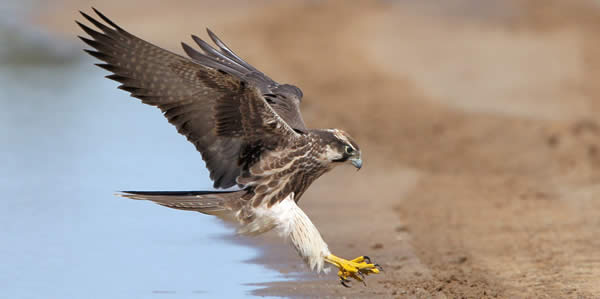
Resources
I will always recommend original sources first; read up on her in the Eddas (especially the Lay of Hyndla and with honorable mention to the Lay of Thrym). She is mentioned in many of the Sagas as well, including Egil’s Saga, the Ynglingsaga, and Volsunginsaga.
I definitely recommend Patricia Lafayllve’s Freyja, Lady, Vanadis as a comprehensive and detailed look at Lady. Patricia focuses on information in the lore, although she does discuss modern gnosis as well in one chapter. She’s been a priestess of Freyja for many years and is the first person that I would want to ask if I had a question about the Lady.
Cara Freyasdaughter (of Happily Heathen here on Patheos) runs a wonderful blog devoted to her called The Gold Thread. The blog is filled with good insight about the Lady, including her “Love Notes From Freya”.
Though it may be considered unorthodox (that’s a huge surprise coming from me, right?) to say so, go to the Lady herself. Read the lore, both old and new, but offer to her, pray to her, reach out to her. Share mead and sweet drinks with her, offer her your pleasure, joy, and tears, sing love songs to her and dedicate to her the study and practice of magic. Know whom you approach, but approach her nevertheless with your head held high, your hands outstretched, your heart open and your eyes clear. She brings beauty and wonders to those who bring good things to her, and though some of her lessons may be painful they are always worth the price in the end.

Patheos Pagan on Facebook.
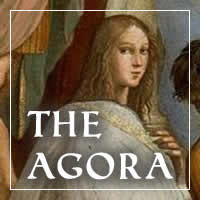
the Agora on Facebook
The Lady’s Quill is published on the second and fourth Thursday of every month. You can subscribe by RSS and e-mail.
Please use the links to the right to keep on top of activities here on the Agora as well as across the entire Patheos Pagan channel.


